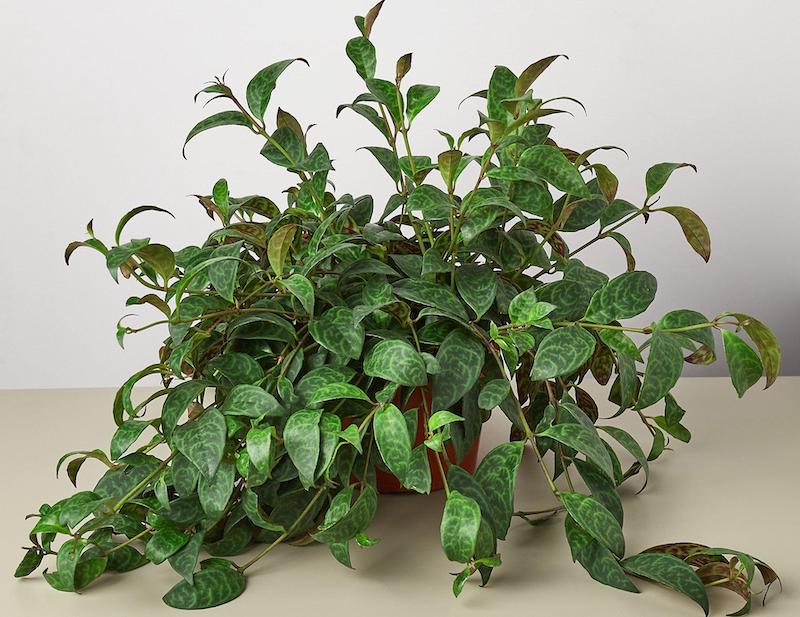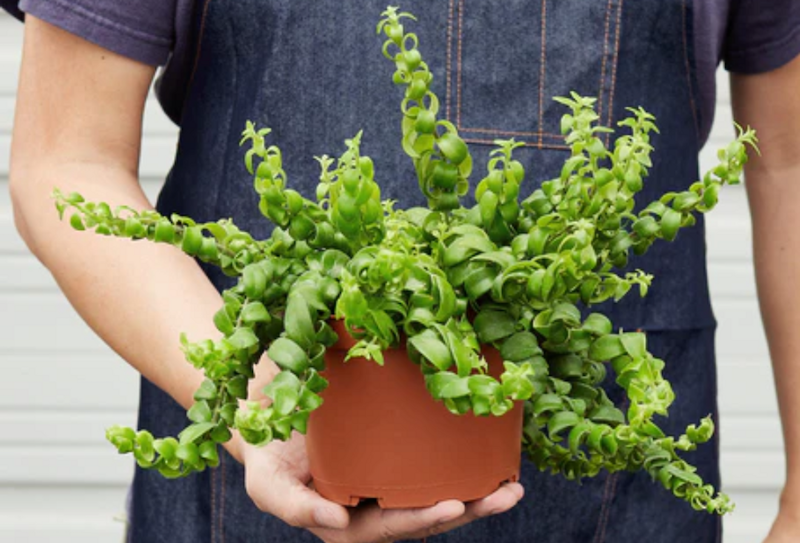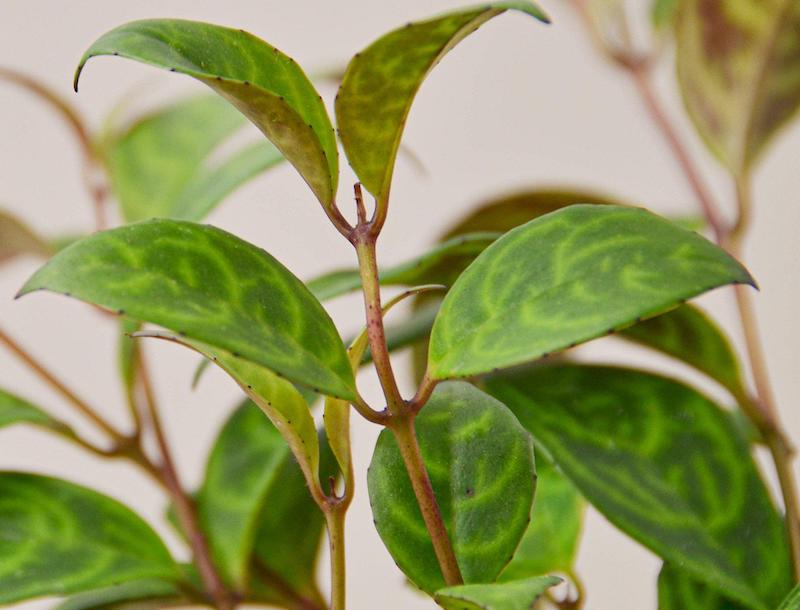Growing Lipstick Plant
If you’re into cascading vines and lovely flowers, then the Lipstick Plant is the houseplant for you. This tropical plant hails from Asia and features burgundy buds that give way to bold red flowers. Also known as Aeschynanthus radicans, the flowers of this plant bloom in clusters and have a tubular shape that inspires the common name.
The flowers are eye-catching, but the Lipstick Plant also boasts waxy green foliage that grows along long, reaching vines that can grow several feet long. The Lipstick Plant is ideal for hanging baskets or the edge of a shelf, so the foliage and blooms can be admired. Lipstick Plants bloom during the summer and fall, but with the proper care, this beauty can enjoy an extended blooming period.

Lipstick Plant Sunlight Requirements
Bright indirect light is best for the Lipstick Plant. Direct sunlight will burn the foliage, so locate the plant back from a south-facing window or hang sheer curtains to diffuse the light. Plants grown in low light may fail to set flower buds or become leggy. The Lipstick Plant naturally has wide-spaced leaves with exposed stems, but improper light may cause leaf drop, creating a sparse-looking plant.
Planting Lipstick Plant
Lipstick Plant prefers soil with medium moisture and good drainage. The container should have holes in the bottom so that excess water can run through. Plants that are root bound or just on the verge of being root bound are more likely to bloom, so don’t rush to repot. Select a container that is an inch or two larger in diameter when transplanting Lipstick plants.
Watering Lipstick Plant
Overwatering is perhaps the biggest problem for Lipstick Plants. In nature, Lipstick Plants grow as epiphytes, growing on trees or in rock crevices. Epiphytic plants require good drainage because they are prone to root rot. Lipstick plants like damp conditions, but wait to water until the top few inches of soil are dry. Feel the soil to ensure the conditions are right before watering. Increased humidity supports new growth and flowers. Lipstick plants can live in medium humidity, but will be more successful in a spot with extra dampness in the air or near a humidifier.
Fertilizing Lipstick Plant
A balanced diet supports new growth and encourages flowering. Routinely fertilizing Lipstick plants will help this plant bloom and possibly even extend the blooming season. Feed Lipstick plants using a balanced plant food with an NPK ratio around 10-10-10. Use a water-soluble fertilizer that can be applied during a regular watering session. Feed the plant every 3 to 4 weeks starting in the spring and lasting until the fall.

Common Lipstick Plant Problems
Lipstick plants like warm conditions, and they thrive with consistency. Position the plant away from vents, drafty windows, and exterior doors. The space should be warm but far from moving or blowing air. Foliage turning yellow indicates water stress, so either the plant has received too much or not enough water. The plant may fail to bloom if it is rootbound or underfed, so repot every few years or as needed and stick to a fertilizing schedule.
Propagating Lipstick Plant
Lipstick plants are easy to propagate through stem cuttings. Using clean shears, trim a stem section that does not have flowers. Remove the lower leaves and place the cut end in soil or water. Keep the soil consistently damp for cuttings propagated in soil. The conditions should be more damp than what an established plant would need. Cuttings propagated in water should push out roots in a few weeks and can be transplanted to soil when the roots are at least one inch long. Rooted cuttings transplanted to soil will need to be kept slightly more damp for the first few weeks.

Growing Lipstick Plant Outdoors
Lipstick plants are tropical, so they like warm, damp conditions. You can move your houseplant outside as long as the conditions are favorable. Lipstick plants potted in hanging baskets make an excellent addition to a patio or porch. Locate Lipstick plants outdoors when the temperature is consistently above 60 degrees in an area that receives bright indirect light. Drainage is always important, but plants outside especially need good drainage to prevent waterlogged soil after rainstorms. Water when the top few inches of soil are dry.
 |
Author Alison Cotsonas - Published 03-09-2023 |
